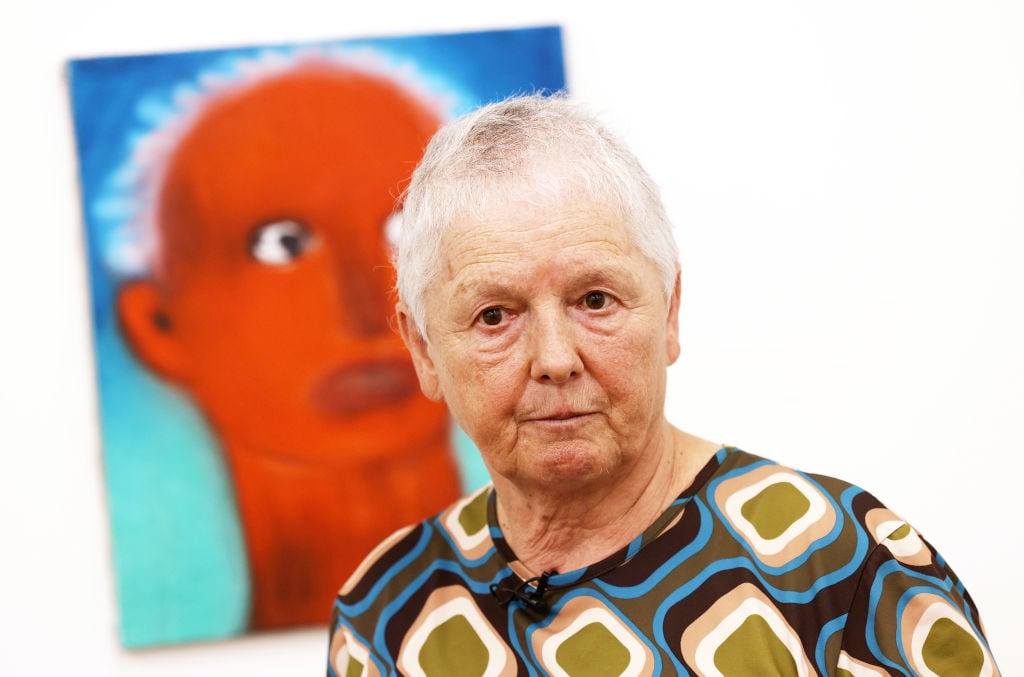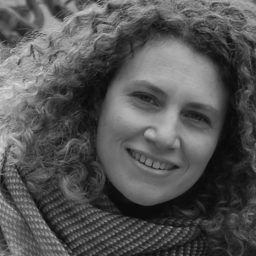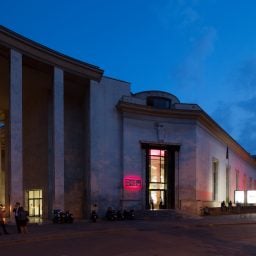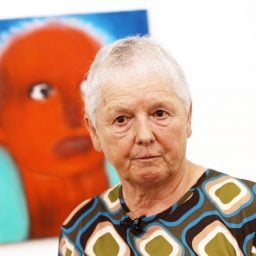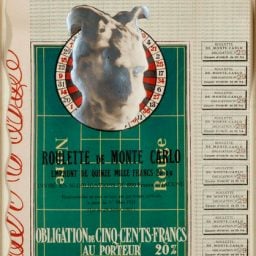France’s State Council has rejected an appeal to censor a hotly debated painting by Swiss artist Miriam Cahn depicting sexual war crimes committed in Bucha, Ukraine. The work is currently on view in the artist’s retrospective titled “Ma Pensée Serielle” (“My Serial Thought”) at the Palais de Tokyo in Paris.
In today’s written verdict viewed by Artnet News, a judge concluded Cahn’s painting, titled fuck abstraction!, may remain hanging, because the “artist’s only intention is to denounce a crime” via the work. The painting also does not “violate” the safety of children or human dignity, as appellants have argued, since extra measures have been taken to contextualize the “extraordinarily raw quality” of the work, stated the Council, which acts as the supreme court of appeal for administrative law courts. The Palais de Tokyo does not permit unaccompanied minors into the side gallery featuring the contested work and advises against showing it to children.
Cahn’s semi-abstract painting in question portrays a forced fellation, based on the rape and massacre of Bucha’s residents by Russian troops, and was intended to denounce sexual crimes used as a weapon of war, according to the artist. Petitioners, however, said the central victim in the scene appears to be a child due to their small physique. They maintained that is enough to justify the work’s removal or restriction from minors on the grounds that it violates French law forbidding public displays of “pedo-pornographic” material that “incites” predators and “puts minors in danger.”

Miriam Cahn, fuck abstraction! (2007-2022). 3009 CAH/P 3029. Courtesy the artist, Galerie Jocelyn Wolff and Meyer Riegger Berlin/Karlsruhe. Photo by François Doury.
Today’s ruling is the second legal pronouncement on the question, following weeks of controversy fueled by figures in France’s far-right, which has spread across political camps. In March, the debate was first taken to court when several associations lodged a failed legal petition to censor the painting. Undeterred, four of the groups appealed that ruling, led by the Association Juristes Pour l’Enfance (Lawyers for Childhood, or JPE), which is tied to the anti-same sex marriage protest movement La Manif pour tous (Protest for All].
In response to today’s verdict, Paul Mathonnet, a lawyer for the Palais de Tokyo, told Artnet News: “It’s very important the judge has put a clear stop to attempts at circumventing the right to freedom of expression, by way of so-called child protection… It shows one cannot remove an artwork from its context.”
Cahn has reiterated she did not portray any children in the painting, and the contrasting size of the subjects is a metaphor to show “the corporeal power of the oppressor, and the fragility of the oppressed.” That statement is shown beside the painting, which is one of more than 200 on view through May 14 at the retrospective curated by Emma Lavigne and Marta Dziewanska.
Nevertheless, clarifications did little to placate critics who launched a petition against the work, signed by nearly 14,000 people. The issue was further inflamed when far-right MP Caroline Parmentier brought it to the National Assembly in a plea for its removal.
Speaking to the left-leaning daily Liberation prior to today’s ruling, Cahn, who has long dealt with controversy over her works, called the current debate “absurd,” and regretted that “for a long time I haven’t been able to show anything in the U.S., but I didn’t expect this in Paris.”
Indeed, lawyers for the art center say local extremists have been influenced by ideologies “blown in from across the Atlantic,” exemplified by the recent outcry in Florida over Michelangelo’s David. “There’s a cultural and political battle being waged” by some of the plaintiffs, added Mathonnet.
In its reaction today, the Palais de Tokyo also stated it “regrets that the affair has led to the exploitation of this artwork.”
However, JPE lawyer Adeline le Gouvello told Artnet News the opposition’s “whole argument was to say the issue was political, to prevent us from addressing the substance of the problem.” She added that the judge’s decision was “completely incoherent” in its recognition that “there’s a problem with this artwork,” requiring “never-before-seen precautionary measures,” while still allowing children to see it.
Calls to censor the work are not confined to partisan lines. Homayra Sellier, founder of the children’s defense group, Innocence in Danger, which joined the JPE in their legal petition, told Artnet News the group is not linked to any political movement. “We don’t care that Miriam Cahn claims she’s denouncing war crimes. It doesn’t matter,” she added. “The first impression given by this painting… is that they are children.”
Supporters of the exhibition have also risen to the fore. In an April 8 Le Monde editorial, 26 leaders of French art institutions defended artistic free speech, and denounced a so-called international “cultural battle.” Signatories included Laurent Le Bon, president of the Centre Pompidou; Chris Dercon, president of the Réunion des Musées Nationaux – Grand Palais; and Jack Lang, former culture minister and president of the Arab World Institute. “Rather than being afraid to shock,” the editorial read, “we should be afraid of never shocking [anyone].”
